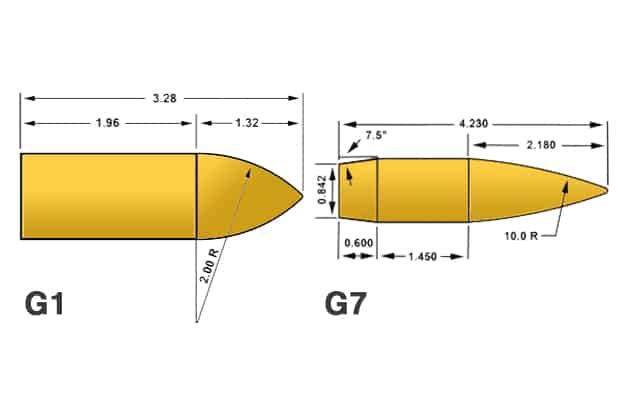
Ballistic Coefficient (BC):
In ballistics, Ballistic Coefficient (BC) is the ratio of the sectional density of a bullet to its coefficient of form. Ballistic Coefficient (BC) represents the projectile’s ability to overcome the resistance of the air in flight. A bullet with a numerically high BC will meet less air resistance than a bullet with a low BC. The Ballistic Coefficient of a bullet plays an increasingly important role as shooting distances increase.
Standard Projectile Types:
An issue with accurately measuring flight characteristics of a bullet is that any mathematical model must differentiate between the many types of bullets and shapes; bullets of different shapes yield different drag curves, and cannot be modeled by a single formula. Because of this, several different drag curve models have been standardized for common projectile types, and are shown below.
- G1: also known as Ingalls, G1 projectiles are flatbase bullets with 2 caliber nose ogive and are the most common type of bullet.
- G2: Aberdeen J projectiles
- G5: short 7.5 degree boat-tails, with 6.19 caliber long tangent ogive
- G6: flatbase projectiles with a 6 cailber secant ogive
- G7: long 7.5 degree boat-tails, with 10 caliber tangent ogive, and are very popular with manufacturers for extremely low-drag bullets.
- G8: flatbase projectiles with a 10 caliber secant ogive
- GL: blunt lead nose projectiles
